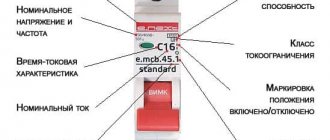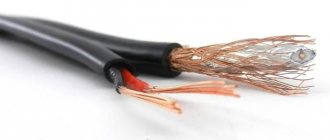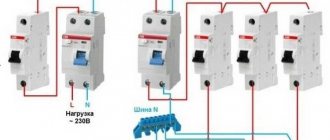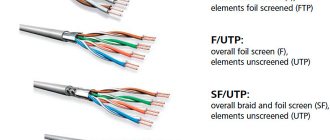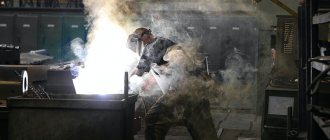Connecting the oven to the electrical network involves calculating the wiring parameters and automatic protective shutdown, which is due to the significant power of the device. The location of the outlet should be chosen correctly for ease of connection and safety. It is important to correctly place the built-in electric oven and take into account the presence of a hob.
Features of electric ovens and the process of connecting them
There are two types of electric ovens:
- dependent - in the same housing with the hob or complete with it. The entire structure has one control unit and is connected as a single device. Disadvantage: you need to think about the location taking into account the top plate. That is, the installation of the oven is limited in placement options - its top must be open. At the same time, connecting to the wiring is simpler, since such a device has one power cord;
- independent - separate self-sufficient products. You can purchase an additional hob for the device, but the devices will have separate control units and the same connection. This oven can be placed at a height to make it easier to observe cooking, or mounted in a cabinet with a closed top.
Construction of electric ovens
The main functional elements that determine the high power and complexity of connecting the oven to the network are heaters. Heating elements are used - metal tubes in the form of a coil, inside - filaments (spirals). Usually there are two heating elements in the inner chamber - at the bottom and at the top; some models also have additional elements on the sides.
For electric cooking surfaces, a different principle is often used - induction heating. High-frequency current is supplied to a coil of wire turns. Vortex processes are generated that convert energy into heat, heating a special surface.
The convection of air inside the oven chamber and the uniform distribution of heat flows is ensured by the impeller. Most models are additionally equipped with a tangential fan (casing with a wheel with blades), which simultaneously prevents heat leakage and overheating of the case.
Connecting an oven to electricity largely depends on the power, which is always significant, on average from 3.5 to 7 kW. If there is a hob, then you need to add the same amount.
How to install?
The prevalence of built-in ovens is very high. They can be installed either under the tabletop or in a pencil case, at eye level. Homeowners with the proper knowledge and skills can install the oven themselves.
To avoid a dangerous situation when working with your own hands, you must comply with the following requirements:
- kitchen textiles and oil can easily catch fire from excess heat, so they should not be located near the built-in niche;
- the oven niche should be finished with materials that can withstand up to 50 degrees of heat;
- other electrical household devices must be placed at a distance from the installation;
- water sources should also be somewhat removed;
- The power grounded socket is installed at a height of 10 cm from the surface.
The installation location may have the following examples.
- The cabinet under the countertop is considered a traditional attachment to kitchen furniture. The option is suitable for a small kitchen, but this installation scheme may vary.
- If there is enough space, it is more convenient to place an additional column, specifically under the built-in electrical cabinet. A device placed at a height is more comfortable to clean and maintain; small children cannot reach it. It is more convenient to get ready-made food, and it is easier to monitor the cooking process.
- In a finished kitchen with an island, it makes more sense to place the cabinet right in the middle and place the hob on top.
The installation of a built-in gas oven is particularly difficult. The main problem is the gas supply to the device. It is better to entrust this work to qualified employees. Connection to the main gas valve is strictly prohibited on any section of the pipe. Safety precautions require the presence of protection with a gas supply pipe and an oven. Mechanical and temperature influences are unacceptable.
If a single appliance is attached to the kitchen, you can take a bellows hose, which is connected to a branch from the general tap to the gas branch, and to the selected product. The use of household extension cords longer than 2 meters is not allowed.
You should also remember that ovens can have two connection options, on both sides at the same time. After the work is completed, the remaining free pipe is plugged.
At the final stage of all work, it is necessary to check the size of the niche, the assembly of all components, and tightness. The possibility of leakage is checked by applying a soap solution to the connections. It can be applied to all welded or threaded joints. If bubbles appear, the problematic connection must be disassembled and sealed with tow. The bar for compliance with safety rules should be high; take connecting your oven seriously.
If everything is in order, the oven can be installed in a niche and secured with special fasteners included in the package.
What to consider when connecting the oven to the electrical network
Parameters that must be taken into account and assessed before installing the oven and connecting it to the network:
- ratio of power and wiring: two- or three-phase (for a 220 or 380 V network), cross-section of conductors, whether there is grounding;
- automatic protective shutdown parameters (circuit breakers, RCDs or automatic circuit breakers);
- location and parameters of sockets: they must be at a safe distance, suitable for the current value;
- size of the electric oven, whether a hob will be installed.
RCD - necessary or not?
It is recommended to install the RCD along with the circuit breaker on the oven. The machine will help protect against excessive overheating, which causes short circuits.
It is recommended to install the RCD along with the circuit breaker on the oven.
But you need to understand that it simply cannot provide adequate protection against a breakdown on the case. It's really dangerous. Because of this, it is recommended to make a combination of RCD + AB or a difavtomat. Then, even in the event of a breakdown or accidental contact, no one will be harmed.
But you need to understand that it simply cannot provide adequate protection against a breakdown on the case.
You need to choose an RCD according to this principle: it should be one step higher than the machine.
You need to choose an RCD according to this principle: it should be one step higher than the machine.
Wiring
In old buildings (Soviet period), if the wiring has not been changed, then it is aluminum, with a core cross-section of 1.5 mm², without a grounding wire. According to some tables of ratios, it is believed that this is enough for 4.4–5 kW, but in practice for such powerful appliances as an oven this is enough for 3.5 kW and no more. You will have to either change the line or select a device with a lower capacity (up to 3.5 kW and 16 A), otherwise there is a risk of overheating of the wires and fire.
Often the rules are violated and, for example, 5 kW devices are “hung” on an aluminum line of 1.5 mm², and they work for years without negative consequences, but this is a risk and there is no guarantee against overheating of the cores. Before installing a built-in oven, it is advisable to study several options for tables of power ratios and wiring cross-sections. Select the average value (in most cases this is enough) or with a margin.
You must connect the oven to the power supply taking into account the wiring rules:
- The power of the consumers is summed up, so it is advisable to allocate a separate line with one socket for the electric oven. However, if the cross-section of the cores allows, then more consumers are allowed, but it must be taken into account that in the event of an overload, short circuit, or breakdown, all devices will be de-energized. And also the differential current values for shutdown are different for individual devices, so incorrect operation of the protection is possible;
- automatic protective shutdown - RCD, difavtomat - highly desirable. But if there is no grounding (two-wire wiring), then it is mandatory. Without protection in the event of a breakdown or insulation failure, the user risks receiving an electric shock with fatal consequences, and in the event of a voltage surge, the risk of device failure is increased;
- It is necessary to select not only the cross-section of the conductors, but also the parameters of the sockets according to the current value, otherwise they will heat up and there will be a risk of fire.
Sockets
The socket must be designed for the power of the devices and network parameters. They select according to the current value - for example, if the wiring cross-section is for 16 A, which is suitable for an electric oven with 3.5 kW, then you need a model specifically for this or a larger characteristic. In this case, if you take such a product for 16 A, then it will be enough, so you can put it at 20 or 32 A.
Sockets for high currents may differ in shape and holes; often the plug of the electric oven cord has a geometry for them, for example, for 32 A - three flat terminals. If the network is three-phase, then a product with 4 or 5 wires will be required. If the calculations are incorrect, the outlet will heat up and burn out may occur. Old Soviet models will not definitely fit - they are 6 A. You need to choose starting from type F and 10 A. For greater safety, you can choose a waterproof size with a lid (for example, IP 44 from splashes).
Socket placement
It is recommended to install the socket at a height of 30 cm from the floor for safety in case of flooding. Usually it is placed no higher than 1 m (SP 31-110-2003 clause 14.35). It is not advisable to install it under or above heating devices and boilers.
Approximate recommendations for distances: to window openings - at least 10 cm, door openings - 60, from the boiler tank, oven heating chamber - 60.
All advice on how to properly install an outlet is not specific and of a recommendation nature, but it is important to at least approximately take into account the rules and the appropriateness of the placement option. For example, it is reasonable to provide a gap of 10–30 cm from the floor for safety in case of flooding.
The optimal height of sockets under normal circumstances is not lower than 90 cm (eye level), according to the European standard - 30 cm. In conditions of limited space and technical features of the kitchen, the rules may not be followed. But it is always important that the socket is not directly under or above the devices, but on the side, behind, in areas that are as protected as possible from heat flows and splashes. Often kitchen furniture does not have a back wall, so the socket is hidden there.
Rules for preparing a furniture niche
After the installation location and method have been selected, it is necessary to provide:
- Protection against voltage surges in the general electrical network;
- Grounding;
- Ventilation – the oven needs to be built in at a distance of 50 mm from the back wall of the niche, 9-10 cm from the bottom, and the gaps on the sides should be approximately 5 cm.
Cable
If, when purchasing an oven, a cable with a plug is included, then it is already designed for the power of the device. But often there is no power cord, and this situation is standard, since different connection options are used and the cable that will be included may turn out to be unnecessary.
Cable selection:
- for low-moving wiring from the panel (open or in a groove) to the socket hole or outlet - monolithic cable VVGng (NYMng);
- The oven may be portable, meaning movable segments of the power cord (from the outlet or wiring) may be required. For such areas you need a multi-core cable. Although monolithic can also be used: it is usually copper, has a certain degree of flexibility and is less prone to fractures, unlike aluminum. Here the user must evaluate the frequency of movement of the electric oven. PVA is suitable for the role of stranded wire.
Operational safety
Connecting an RCD for an oven
For safe operation of an oven that has been built into kitchen furniture or placed separately, it will be necessary to protect the user from accidental contact with dangerous potential on its body. For this purpose, switching products are equipped with a special terminal that has an electrical connection to the protective grounding system.
Some experts recommend including a residual current device in the power circuit that is triggered by the slightest leakage current. The protection option with an RCD makes sense in cases where a two-wire power cable is installed in the apartment, that is, there is no reliable and complete grounding in it.
Electrical connection
Connecting an electric oven can be done in two ways:
- directly to the wiring from the panel;
- power cord with plug to the socket installed on the line.
The two methods are equally effective, but with nuances that affect the comfort and maintenance of the oven. With direct installation, installing the network connection of a built-in oven with your own hands is done using mechanical methods: twisting, bolted and terminal structures.
The disadvantage is that it is difficult to disconnect the device, for example, if you need to move it during maintenance or cleaning. Direct connection is used, for example, for aesthetic or technical reasons.
Connection through an outlet is used more often; the option is more convenient. Even if there is no suitable outlet, buying one with the required current parameters (for example, 10, 16, 32 A) and connecting it to the wiring will not be difficult.
Electric oven with hob or other consumers
Electric ovens are powerful (3.5–5 kW), but hobs are even more power-hungry (5–7 kW), so when connecting these two separate appliances, significant adjustments must be made when assessing wiring capabilities. This also applies to situations when other devices are simultaneously powered through one line - lighting, boilers, kettles, etc.
In most cases, the current consumption of the oven is up to 16 A, and if it is powered through the same machine with other devices, then an overload and a shutdown may occur. For example, if you simultaneously connect an electric kettle with 6.5 A, which gives a total of 22.5 A, the automatic protection system will turn off two devices.
It makes more sense to connect an electric oven by extending a power line (for an average appliance, a cross-section of 2.5 mm² is sufficient) only for it with an individual protective automatic shutdown from the input switchboard. You can also use an existing line if it fits the parameters, but do not “hang” other consumers on it. The same applies to the standard size cabinet + hob in the format of a solid appliance with one power cord.
It is not necessary to make grooves for a separate line - it can be done openly, hiding the cores in plastic boxes.
Ovens of a dependent type (the hob is built-in) or separate such devices on the same line (this is not desirable, but is allowed if the wiring is suitable) will together consume a lot of electricity - from 7 kW. You will need at least conductors with a cross section of 4 mm², if the wires are aluminum - then from 6 mm².
Features of connecting a separate electric oven and hob
The cross-section of the supply wires for devices purchased separately and not as a whole device may be different. For a cabinet, a smaller value is usually required - 2.5 mm², for a stove - 4 mm². For a hob, you will need an AB with a rating of 25–32 A under 4 mm²; for a cabinet, 16 A is enough. A higher value is always selected. Accordingly, if the oven malfunctions, the AB will not work; shutdown will occur only when all the insulation burns out and a short circuit occurs.
Connecting wires
All manipulations when connecting wires, installing automation, sockets, wiring are carried out with the circuit breaker turned off (in the switchboard it must be clicked into the off position).
An example of creating a power cord. If there is an outlet and the electric oven has a power of up to 3.5 kW (can be marked P = 3.5 kW), then it is enough to buy a piece of PVA 3 × 2.5 and a collapsible plug for it for 16 A. The length can be selected according to needs, the main thing is that there is no tension.
In the plug, the yellow (yellow-green) wire goes to the ground connector, brown (phase) and blue (zero) are connected to the rest. At the same time, for household appliances, polarity does not matter, but it must be taken into account when connecting wiring to the switchboard, automation (L - phase, N - working zero). "Earth" (PE) must always correspond to its place in the plug and terminals.
Installing the Terminal Block
Household appliances connected via a terminal block are considered more secure. There is contact thanks to the clamping screws. This method is more reliable than connecting through a plug or socket. This connection method has its drawbacks. One of the main things is the difficulty of opening the circuit.
Household appliances connected via a terminal block are considered more secure.
In the “old” blocks the contacts are open. Therefore, it is recommended to install such a block in a small box. If you don’t want to pay for the box, then you can use a regular junction box instead.
In the “old” blocks the contacts are open.
A three-pin block will ideally fit into a square one. The box can be installed directly on the wall by screwing it. When connecting, protected wires are placed under metal plates. The contacts are tightened with clamping bolts.
A three-pin block will ideally fit into a square one.
Important!
Do not mix up the wires. This point is key when connecting.
Connection instructions step by step
The procedure for connecting an electric built-in oven to electricity by creating a separate line:
- The input AV switches off in the switchboard.
- Automatic protection is connected.
- The line cable is pulled to the panel, it should be connected there to the RCD or RCBO.
- Next, observing the polarity, connect the wires to the outlet box, if the oven has a cord with a plug, or directly to the power cable of the electric oven, to its terminals.
Where can I buy
You can purchase equipment as quickly as possible at your nearest specialized store. The optimal option, in terms of price-quality ratio, remains purchasing from the AliExpress online store. Mandatory long waits for parcels from China are a thing of the past, because now many goods are in intermediate warehouses in destination countries: for example, when ordering, you can select the “Delivery from the Russian Federation” option:
| Electric convection oven AVEX, display, 7 functions | Electric oven HIBERG | Electric fish smoker BEIJAMEI |
| Air convection oven CalmDo 1800W | DKX60-01 built-in electric oven with Smart Touch\ | ITOP Double Layer Baking Oven |



